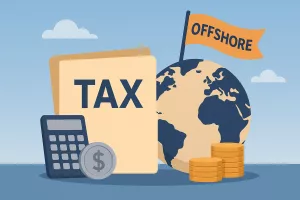Understanding the difference between tax deductions and tax exemptions can be a game-changer when it comes to managing your finances effectively. These tools not only help in reducing your taxable income but also ensure that you don’t pay more than your fair share to the IRS. Let’s delve deeper into these concepts, explore strategies to maximize their benefits, and look at real-life scenarios and professional insights to make the most of your tax situation.
Tax Deductions: The Ins and Outs
Tax deductions work by allowing you to subtract certain expenses from your taxable income. This can significantly reduce the amount you owe to the IRS. Here’s a closer look at how you can leverage these deductions to optimize your tax returns.
Types of Tax Deductions
- Standard Deduction: This deduction simplifies the tax filing process by allowing most taxpayers to deduct a fixed amount from their income. As of 2023, the standard deduction is approximately $13,850 for single filers, but this amount increases for married couples filing jointly or for heads of households. It’s a straightforward option, but you should still compare it against itemized deductions annually.
- Itemized Deductions: If your deductible expenses exceed the standard deduction, itemizing might save you more money. Some key categories include:
- Medical and Dental Expenses: Only expenses beyond 7.5% of your adjusted gross income (AGI) are deductible, making it crucial to track all medical-related receipts throughout the year.
- State and Local Taxes (SALT): These include property taxes and either state income tax or sales tax, with a combined cap of $10,000. Given the cap, strategic prepayments can sometimes help optimize deductions.
- Mortgage Interest: Deductible for interest payments on mortgages up to $750,000, provided the home was purchased after December 15, 2017. Home equity lines of credit might also be deductible if used for home improvements.
- Charitable Contributions: Contributions to qualified organizations can be deducted, generally up to 60% of your AGI. Non-cash donations require appraisals and documentation for amounts over $500.
- Above-The-Line Deductions: These deductions reduce your AGI, which can help you qualify for other tax benefits. Some common above-the-line deductions include:
- Traditional IRA Contributions: Deductible up to certain limits, depending on your income and whether you or your spouse are covered by a retirement plan at work.
- Student Loan Interest: Deductible up to $2,500 per year, which can provide relief for recent graduates.
- Educator Expenses: Teachers can deduct up to $300 for classroom supplies.
Practical Tips for Maximizing Deductions
- Keep Detailed Records: Consistent and meticulous record-keeping is vital. Consider using digital apps like Expensify or Mint to categorize and track expenses. This practice not only aids in maximizing deductions but also in defending them in case of an audit.
- Regularly Review Potential Deductions: Life changes, like a new job or starting a family, can open up new deductions. Annually review what’s available to you and adjust your tax strategy accordingly.
- Consult a Tax Professional: Especially if your financial situation is complex, a tax advisor can help you identify deductions you might miss and ensure compliance with all relevant tax laws. Their insights can also help you plan long-term tax strategies.
Tax Exemptions: Simplifying Your Tax Burden
Tax exemptions reduce taxable income by a predetermined amount, often automatically applied based on personal circumstances. While currently limited due to recent tax reforms, exemptions still play a crucial role in tax strategy.
Common Tax Exemptions
- Personal and Dependent Exemptions: Though suspended through 2025, understanding these exemptions is essential for long-term planning, especially as they may return in future tax reforms.
- Retirement Contributions: Contributions to Traditional IRAs and 401(k)s are exempt from current taxation up to a limit, allowing you to defer taxes until retirement when you might be in a lower tax bracket. For 2023, contribution limits are $6,500 for IRAs and $22,500 for 401(k)s.
- Foreign Earned Income Exclusion (FEIE): U.S. citizens living abroad can exclude up to $120,000 of foreign income in 2023, but this requires passing either the bona fide residence test or the physical presence test.
Strategies for Utilizing Exemptions
- Maximize Retirement Contributions: Not only does this provide immediate tax benefits, but it also aids in long-term financial planning. Consider strategies like catch-up contributions if you’re over 50.
- Understand Dependent Qualifications: The IRS has specific criteria for who qualifies as a dependent. This includes children under 19 (or 24 if a full-time student), relatives who meet certain income requirements, and others living with you for a year. Recognizing these can help plan future tax strategies even before exemptions potentially return.
Combining Deductions and Exemptions: A Strategic Approach
Using deductions and exemptions in tandem can significantly minimize your tax liability. Here’s how to approach this strategically to maximize your benefits.
Steps to an Effective Tax Strategy
- Analyze Your Financial Situation: Conduct a thorough review of your income, expenses, and potential deductions and exemptions. Tools like QuickBooks or a simple spreadsheet can help in maintaining an organized financial overview.
- Stay Informed on Tax Law Changes: Tax laws are subject to change, often annually. Subscribing to updates from the IRS or consulting with a tax advisor can ensure you’re always leveraging the latest rules to your advantage.
- Use a Tax Professional: Particularly if you have significant investments, own a business, or have other complexities, a CPA can tailor strategies to your situation, ensuring maximum deduction and exemption application.
Common Mistakes and How to Avoid Them
- Overlooking Deductions and Exemptions: This is a common pitfall. Regularly consult IRS resources or a tax professional to ensure you’re aware of all possible options.
- Poor Record-Keeping: Streamline record-keeping by setting up a dedicated email for digital receipts and using cloud storage for scanned documents. This approach makes retrieving information easy during tax season.
- Assuming Standard Deduction is Best: While it’s the simpler route, running the numbers for itemized deductions can sometimes yield surprises in savings. Use tax software or a professional to run both scenarios.
Real-World Example: The Smith Family
Take the Smiths, a family of four with two working parents and two children. They own a home, pay a mortgage, donate to charity, and have medical expenses. By carefully itemizing their deductions—such as mortgage interest, charitable donations, and medical expenses—they found they could deduct more than the standard deduction. Moreover, by maximizing contributions to their tax-exempt retirement accounts, they successfully decreased their taxable income and saved significantly on their tax bill.
Advanced Strategies for Tax Efficiency
- Bunching Deductions: This involves timing the payment of deductible expenses, like property taxes or charitable contributions, to maximize deductions in a single tax year. It can be particularly useful for those whose itemized deductions are close to the standard deduction threshold.
- Consider Qualified Opportunity Zones: Investing in these areas can offer significant tax breaks, including deferral of capital gains taxes. This strategy requires careful planning and a long-term investment perspective.
- Utilize Health Savings Accounts (HSAs): Contributions to HSAs are tax-deductible, the earnings grow tax-free, and distributions for qualified medical expenses are tax-free. It’s a triple tax advantage that can be a powerful tool for those with high-deductible health plans.
Navigating Tax Deductions and Exemptions with Confidence
The landscape of tax deductions and exemptions is complex, but with the right approach, it becomes manageable and beneficial. By understanding the different types, keeping detailed records, and strategically managing both deductions and exemptions, you can lower your tax burden and optimize your financial health. Remember, the key to tax efficiency is proactive planning and staying informed about the ever-evolving tax laws. With this knowledge in hand, you’re well-equipped to make informed decisions and keep more of your hard-earned money.



